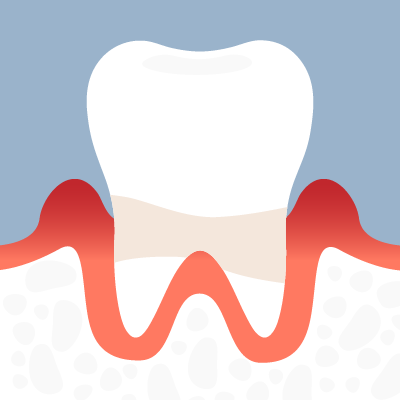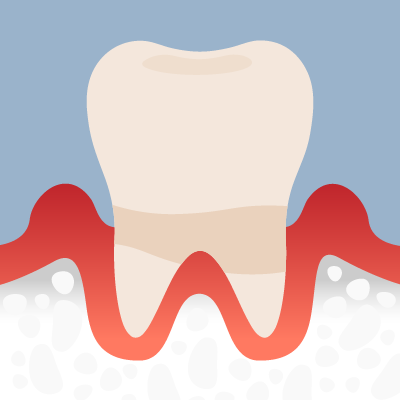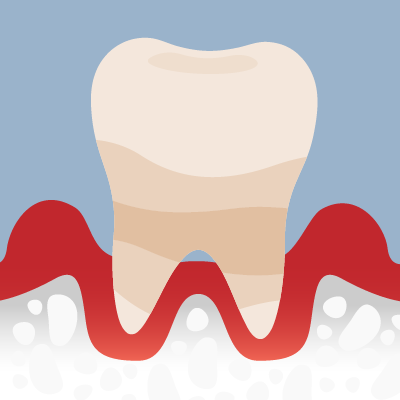
Periodontal health

What is periodontal disease?
Periodontal disease is the process in which gum and/or bone that supports the teeth is lost. If left untreated, this disease can lead to abscesses, infections and even tooth loss. Periodontal disease is mainly caused by specific bacteria in the mouth; however, genetics and other influencing factors such as bodily diseases, hormones, and smoking also play significant roles in its development. It is important to note that most people are unaware that they suffer from periodontal disease, because it can be present without pain or swelling.
In general, periodontal disease can be broken down into gingivitis and periodontitis. Gingivitis includes inflammation and bleeding of the gums but no loss of tooth-supporting bone, whereas periodontitis includes the loss of tooth-supporting bone.
Understanding the Stages of Periodontal Disease
Healthy gums
Healthy gums are characterized by a pale pink color, firmness, and a snug fit around teeth.
If you notice any signs of early gum disease, such as changes in color or appearance, it’s essential to discuss it with your dental professional during your next visit.
Stage 1
Gingivitis
Gingivitis, a common and mild form of gum disease (periodontal disease), manifests as irritation, redness, swelling, and bleeding of the gingiva (gum tissue around the teeth).
Taking gingivitis seriously and seeking prompt treatment is crucial for preventing its progression.
Stage 2
Mild periodontitis
Left untreated, gingivitis can evolve into mild periodontitis.
Gums start to pull away from teeth, leading to the development of periodontal pockets where plaque, tartar, and bacteria accumulate beyond the reach of regular brushing and flossing.
Stage 3
Moderate periodontitis
Progressing further, moderate periodontitis results in increased bone loss around the teeth.
Bacteria continue to erode ligaments and soft tissues supporting the teeth, leading to potential soreness and tenderness in the gums.
Stage 4
Severe periodontitis
When left untreated, periodontitis reaches its most severe stage. Ongoing bone loss may cause teeth to become loose, and in some cases, they may fall out.
Symptoms may include bleeding gums, pus, and infection around the gum line, often resulting in chronic bad breath (halitosis).
Regular dental check-ups are crucial for early detection and effective management of periodontal disease, ensuring optimal oral health.
How is periodontal disease treated?
Treating periodontal disease includes lowering the amount of the disease-causing bacteria in the mouth and addressing any other influencing factors. Treatment may include oral hygiene education, increased frequency of dental cleanings, antibiotics, surgery, and reducing the influence of other potential diseases (eg. diabetes) and influencing factors (eg. smoking) affecting the patient.
Other oral tissue disorders
Dr. Roemermann has specialized training in the diagnosis and treatment of numerous diseases of the mouth, outside of periodontal disease. When you come for your visit, an extensive medical history will be obtained and a detailed oral examination will be completed. Dr. Roemermann and our amazing registered dental hygienists will then work together with you and your other health care providers to help treat your condition.






